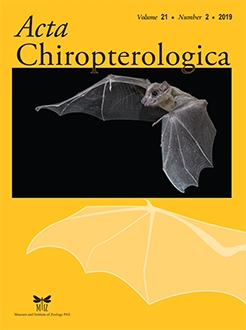Many factors, including microphone type, affect the quality of acoustic calls recorded by bat detectors and detection probabilities of individual species. Because omnidirectional microphones tend to have a shorter range and record more noise than directional microphones, it has been suggested that these microphones be set farther from reflecting surfaces. Our objective was to determine the effects of microphone height (1.5, 5, and 9 m), distance from forest edge (1, 3, and 5 m), and survey timing on the number of bat files recorded, quality of recorded files, the proportion of identifiable files, and the probability of detecting individual species. We deployed 3×3 arrays of two types of bat detectors with omnidirectional microphones at two sites in Kentucky during two survey periods. We found little evidence for effects of microphone height or distance from forest edge on call quality or detection probabilities of any species. In contrast, survey period significantly affected the number of files recorded, the proportion of high-quality files, the proportion of identifiable files, and the probability of detecting individual species; the length of the recording session also significantly affected the probability of detecting some species. Thus, it appears that biologists have some latitude when placing detectors with omnidirectional microphones on the landscape but timing of surveys should be considered when designing and analyzing bat acoustic survey and monitoring studies.
How to translate text using browser tools
2 March 2020
Effects of Omnidirectional Microphone Placement and Survey Period on Bat Echolocation Call Quality and Detection Probabilities
Susan C. Loeb,
Brooke A. Hines,
Michael P. Armstrong,
Stanley J. Zarnoch
ACCESS THE FULL ARTICLE

Acta Chiropterologica
Vol. 21 • No. 2
December 2019
Vol. 21 • No. 2
December 2019
acoustic surveys
clutter
detection probabilities
Indiana bat
Myotis sodalis
omnidirectional microphones
survey timing




